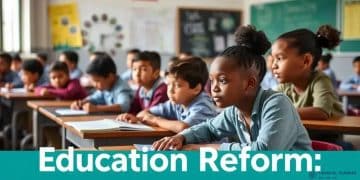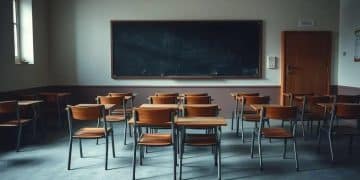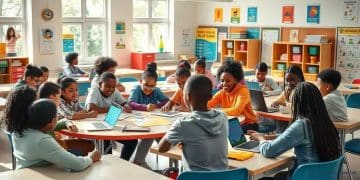Federal education policies influencing local school decisions
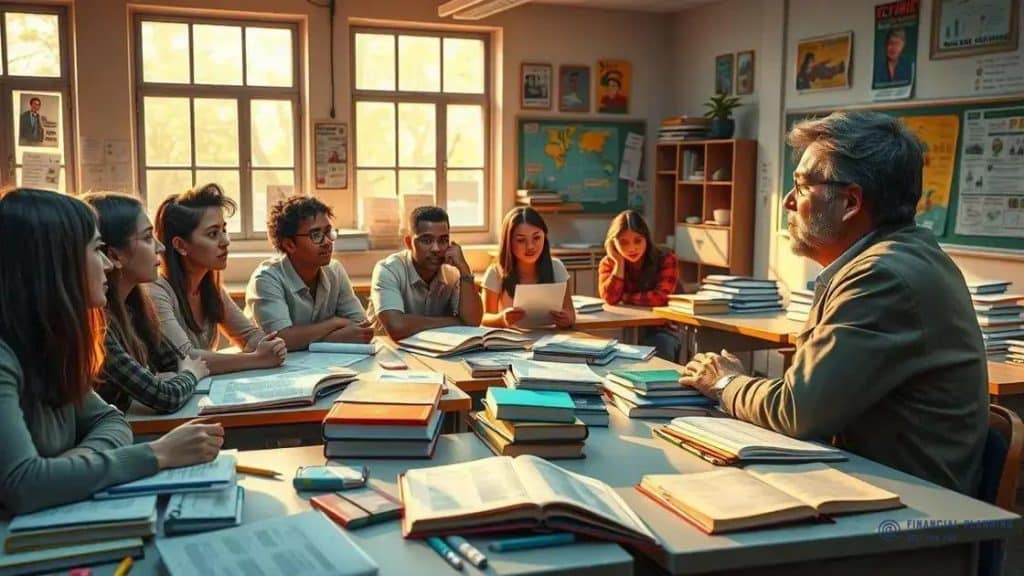
Federal education policies influence local school decisions by setting guidelines and funding priorities that impact curriculum, teacher qualifications, and overall educational practices to ensure equitable learning opportunities for all students.
Federal education policies influencing local school decisions play a crucial role in shaping the educational landscape. Have you ever wondered how decisions made at a national level trickle down to affect your child’s school? Let’s dive into this important topic.
Understanding federal education policies
Understanding federal education policies is essential for grasping how they shape our schools. These policies guide funding, curriculum standards, and even teacher qualifications, all of which affect the student experience.
One key aspect of federal education policies is their aim to ensure equal access to quality education for all students. Laws like the Every Student Succeeds Act (ESSA) highlight the importance of accountability and equitable resources.
Key Features of Federal Education Policies
Let’s explore significant features:
- Funding allocations: These determine how money flows to local schools.
- Curriculum standards: Federal guidelines often influence the subjects taught and how they are assessed.
- Teacher training: Policies can set requirements for teacher qualifications and professional development.
Additionally, federal policies address issues like special education and the needs of underserved populations. They strive to provide tailored support, ensuring that every student has the opportunity to succeed.
Through these measures, the federal government plays a crucial role in shaping educational outcomes across different states. The interaction between federal policies and local implementation can create unique educational environments.
Overall, by understanding federal education policies, communities can better advocate for the resources and support needed to enhance their schools. This understanding helps parents, educators, and policymakers navigate the challenges and responsibilities inherent in the educational system.
The role of local school boards
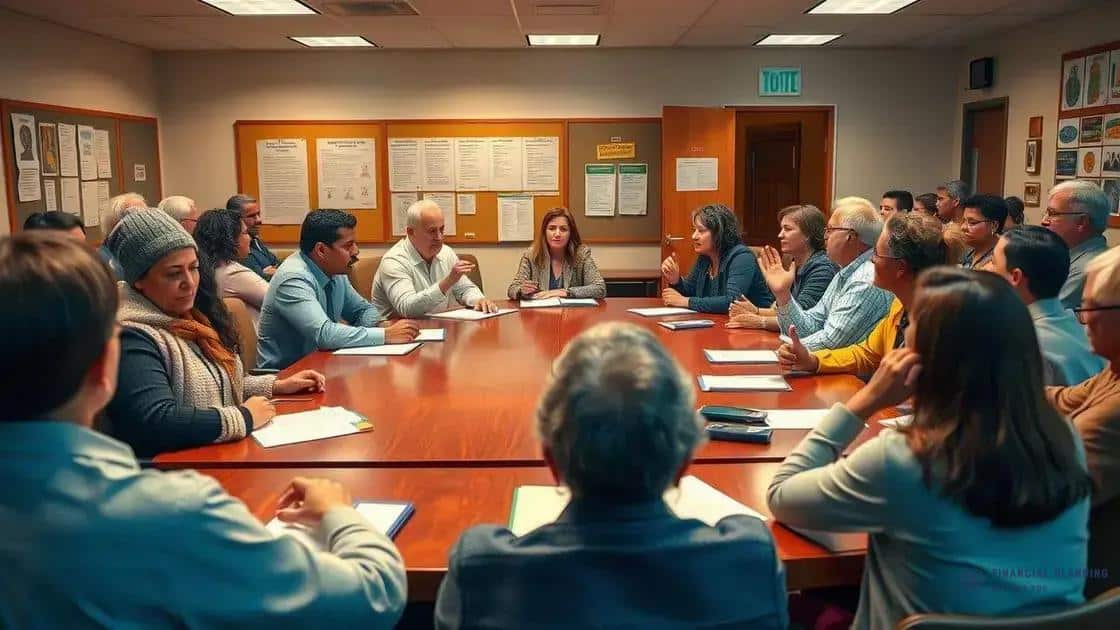
The role of local school boards is vital in shaping educational policies at the community level. These boards are made up of elected officials who represent the interests of parents and students. They make crucial decisions that influence how federal and state policies are implemented in local schools.
School boards are responsible for many important functions, including setting budgets, determining curriculum content, and hiring school personnel. Their actions directly impact the quality of education that students receive. For example, by approving a new science curriculum, a school board can enhance students’ learning experiences.
Key Responsibilities of Local School Boards
Here are some key responsibilities:
- Budgeting: Allocating funds for various programs and resources.
- Curriculum oversight: Ensuring that the curriculum meets state standards.
- Policy development: Creating policies that address local educational needs.
- Community engagement: Involving parents and community members in decision-making.
Moreover, local school boards serve as a bridge between the community and the school administration. They facilitate communication regarding student needs and educational priorities. In essence, they advocate for the community’s educational vision while adhering to broader policies set by the federal and state governments.
Their role also includes responding to challenges, such as budget cuts or changes in educational standards. By actively engaging with stakeholders, local school boards can advocate for necessary resources and support to maintain quality education.
How policies impact classroom practices
How policies impact classroom practices is a critical area to explore when discussing education. Policies from federal and state levels directly influence what happens in classrooms every day. Teachers and school leaders are often guided by these regulations when designing lesson plans, teaching methods, and assessment strategies.
Classroom practices are shaped by policies related to curriculum standards, teacher qualifications, and funding. For instance, a policy that mandates specific learning outcomes requires teachers to adjust their instructional methods accordingly. This ensures that students are meeting the educational goals set forth by authorities.
Influential Factors in Classroom Practices
Several factors show the impact of policies:
- Curriculum requirements: These dictate the subjects and material that must be taught.
- Assessment regulations: Policies guide how student learning is measured.
- Teacher training: Requirements for professional development can shape teachers’ approaches to instruction.
- Resource allocation: Funding affects the materials and support available in classrooms.
Moreover, policies often emphasize the importance of inclusivity and equity. Teachers adapt their practices to ensure that all students, including those with special needs, receive quality education. This often requires additional training and resources to implement effectively.
The dynamic between classroom practices and educational policies highlights the necessity for ongoing dialogue among educators, administrators, and policymakers. This relationship facilitates improvements in teaching and learning, as classrooms evolve in response to new regulations and educational standards.
Case studies of policy effects

Case studies of policy effects provide valuable insights into how education policies shape real-world practices and outcomes. Analyzing specific instances helps illuminate the impact of various regulations on schools and students.
For example, in one district, a policy aimed at increasing funding for low-income schools significantly improved student performance. Schools used the additional resources to enhance teacher training and provide better educational materials. As a result, test scores in math and reading rose markedly within just a few years.
Notable Examples
Several case studies demonstrate the diverse effects of educational policies:
- Inclusion policies: A school district implemented new inclusion policies for students with disabilities. This led to a more supportive environment and increased graduation rates among these students.
- Teacher evaluation reforms: Another district changed its teacher evaluation process. Teachers received more constructive feedback, which improved teaching methods and student engagement.
- Technology integration: A program promoting technology in the classroom allowed students to access online learning resources. This increased student motivation and participation in classes.
Such case studies showcase the broad impact of policy decisions. They highlight that successful implementation not only relies on good intentions but also on effective strategies and community engagement. Observing these effects can help inform future policy changes, ensuring they better meet the needs of students and educators.
Future trends in education policy
Future trends in education policy are increasingly important as we adapt to the changing needs of students and society. As technology evolves and new learning methods emerge, education policies must also change to stay relevant.
One significant trend is the growing emphasis on personalized learning. This approach tailors education to meet individual student needs. Policymakers are encouraging schools to adopt flexible curriculums and use technology to provide customized educational experiences.
Key Trends in Education Policy
Several emerging trends are shaping the future of education:
- Integration of technology: Schools are increasingly using digital tools to enhance learning. Policies are being formulated to ensure all students have access to these resources.
- Focus on mental health: There is a growing acknowledgment of the importance of mental health in schools. Policies are being developed to provide mental health resources for students.
- Equity in education: Future policies aim to address disparities in education, ensuring all students have equal access to quality learning opportunities.
- Global competencies: Educators are focusing on preparing students for a globalized world, emphasizing skills such as critical thinking, collaboration, and cultural awareness.
These trends show a shift towards a more holistic approach to education, recognizing that success goes beyond academics. Education policies are evolving to better prepare students for future challenges, balancing traditional methods with innovative practices.
As these trends develop, it is crucial for educators, policymakers, and communities to collaborate. Stakeholder involvement will ensure that new policies are effective and meet the changing needs of students.
FAQ – Frequently Asked Questions about Federal Education Policies
How do federal education policies affect local schools?
Federal education policies set guidelines and provide funding that shape the curriculum, funding priorities, and teacher qualifications in local schools.
What is personalized learning?
Personalized learning tailors education to meet individual student needs, allowing students to progress at their own pace and engage with content that resonates with them.
Why is community engagement important in education policy?
Community engagement ensures that the voices of parents, teachers, and students are heard, helping to create effective policies that reflect the needs of the community.
What role do technology and innovation play in future education policies?
Technology and innovation are crucial as they enhance learning experiences and prepare students for a digital world, thus driving future education policy developments.


